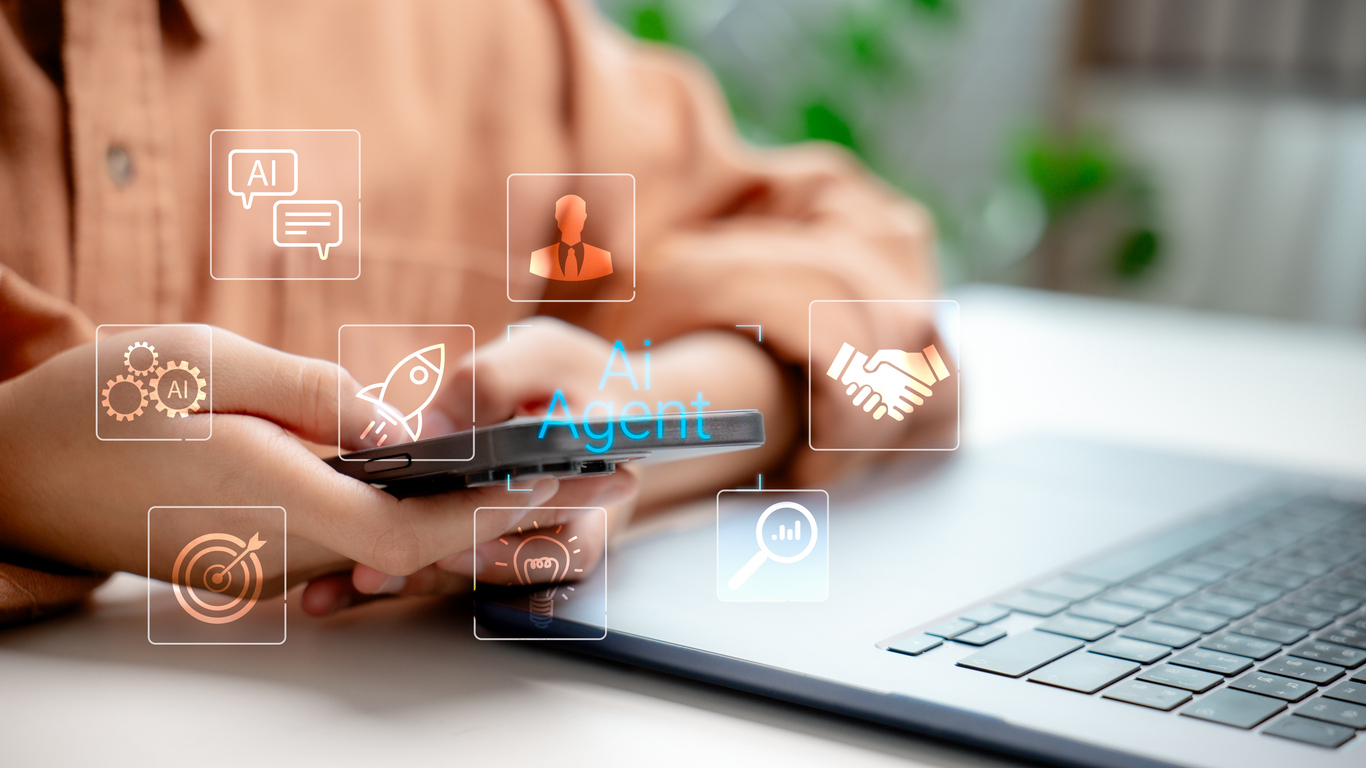Goal-Based Agents: The AI That Thinks in Outcomes
Artificial Intelligence is no longer a tool reserved for enterprise giants. Small businesses are increasingly adopting AI to reduce overhead, improve customer experience, and drive smarter automation strategies. Among the most powerful yet accessible options available today is the goal-based agent—an intelligent system that doesn’t just react to inputs, but acts with purpose, based on a clearly defined objective.
If your business handles tasks like lead nurturing, multi-step workflows, or outcome-driven customer service, goal-based agents may provide the strategic edge you’re looking for.
For a broader look at how AI agents are already transforming small business operations.
What Are Goal-Based Agents?
A goal-based agent is a type of AI system designed to make decisions by evaluating whether or not a specific action helps achieve a predefined goal. Unlike simple or model-based reflex agents, which operate based on immediate inputs or short-term memory, goal-based agents work toward a future state, choosing actions that move them closer to completing their objective. This makes them more dynamic and adaptive—critical traits in customer-facing or multi-step operational environments.
For instance, a chatbot with the goal of "booking an appointment" will continue prompting the user, offering time slots, and following up via email or SMS until that goal is achieved. It doesn't just respond to inputs—it plans intelligently around the end objective.
This concept is rooted in classical AI planning systems, where agents evaluate possible outcomes, then act based on whether an action contributes toward the final result [1].
Why They Matter for Small Businesses
For small business owners who often juggle multiple roles, goal-based AI systems offer more than just efficiency—they offer consistency and customer-centricity. Instead of needing a human to handle every inquiry, these agents can manage full workflows with context awareness and persistence.
Consider an e-commerce business trying to reduce cart abandonment. A goal-based agent with a defined target of "complete purchase" could identify a stalled checkout, send reminders, offer incentives, and redirect the customer back to the cart. Because the agent is focused on achieving the final goal—not just delivering one-time responses—it keeps adapting until the task is completed or deemed unreachable.
Research shows that AI-powered agents with goal-driven logic can increase task completion rates by up to 30% in customer interaction use cases, particularly in industries like retail, healthcare, and financial services [2].
Related: Simple Reflex Agents: Your First Step to AI Automation
Related: This AI Agent Could Revolutionize How Small Businesses Automate in 2025
What Is the Goal-Based Theory in AI?
Goal-based theory in AI refers to the idea that an agent should base its decisions on whether an action contributes to achieving a desired outcome. This theory stands in contrast to reactionary behavior models, where agents act based solely on current stimuli.
In technical terms, goal-based agents contain three key components:
-
A representation of the current environment,
-
A defined goal state the system is trying to reach,
-
A mechanism for evaluating whether an action will move it closer to that goal.
This decision-making model aligns with human strategic thinking, which is why it's often used in environments that simulate or support human-like decision paths—such as customer service or sales [3].
Goal-Based Agents vs Utility-Based Agents
While both goal-based and utility-based agents make decisions based on desired outcomes, the distinction lies in how they define success. A goal-based agent simply wants to achieve the goal—any path that leads to success is acceptable. A utility-based agent, on the other hand, considers multiple outcomes and selects the one with the highest perceived value.
For example, if a customer wants a refund, a goal-based agent may offer the fastest refund route. A utility-based agent, however, may assess whether offering store credit instead would result in higher customer retention and profitability.
Utility-based agents require complex models, often involving machine learning, sentiment analysis, and large volumes of training data. Goal-based agents are typically simpler to implement, making them more suitable for small businesses looking for cost-effective AI solutions that still offer intelligent behavior.
As explained by Stanford’s AI course materials, utility-based systems incorporate additional layers of reasoning and preferences, which increase capability but also complexity [4].
How to Implement Goal-Based Agents in Your Business
The good news for small business owners is that you don’t need to build goal-based agents from scratch. Many no-code platforms today offer tools for creating intelligent workflows based on defined business objectives.
Start by identifying the single goal you want the agent to pursue. This could be scheduling a consultation, processing a return, or collecting customer feedback. From there, map the decision path: what inputs might the customer give, and how should the agent respond at each step to keep progressing toward the goal?
Platforms like Dialogflow, Tidio, or ManyChat allow businesses to set up conversation paths and condition-based actions. If integrated with CRM systems, the agent can even access customer history to personalize its interactions. Over time, you can expand your goals or chain multiple goal-based agents together for more complex workflows.
Testing and iteration are key. Track how many users reach the defined goal, where they drop off, and what kinds of questions stall the flow. This data can help you optimize and improve performance without hiring additional staff.
Final Thoughts
Goal-based agents represent a strategic leap for small businesses ready to move beyond static automation. They are smarter than reflex systems, more cost-effective than utility agents, and perfectly suited for outcomes that require planning and flexibility.
By giving your AI a clear objective and the tools to pursue it intelligently, you can scale your operations, improve customer satisfaction, and free up valuable human time for tasks that require creativity or empathy.
For small business owners, it’s not just about having AI—it’s about having AI with a purpose.
Related: Free Java Certifications in 2025
Related: Which Company Is Spending the Most on AI in 2025?
Sources
-
Russell, S., & Norvig, P. (2021). Artificial Intelligence: A Modern Approach (4th ed.). Pearson.
-
Accenture (2023). AI Trends Report: How Smart Automation Drives SMB Growth.
-
MIT Sloan (2024). What Makes AI Decisions Work? Goal-Oriented Thinking in Machine Agents.
-
Stanford University. (n.d.). CS221: Artificial Intelligence Principles. Lecture Notes on Utility and Goal-Based Agents.














